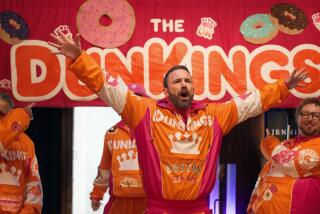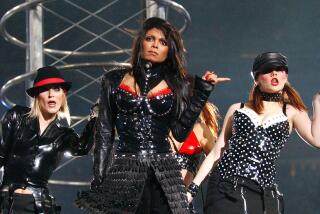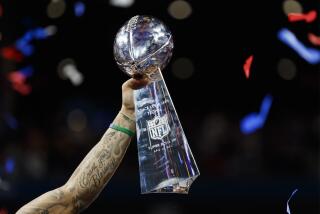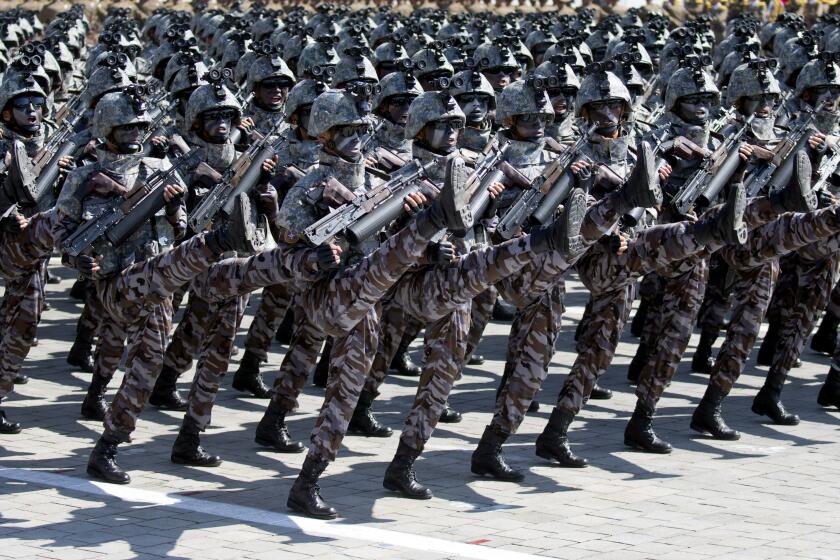Ten Years Later, There’s Just Poverty in Overton
MIAMI — Broken glass is still everywhere. Abandoned apartment buildings are still boarded up. The unemployed still walk the streets by day. The gang-bangers and hustlers still walk the streets at night. The drug dealers still peddle on the corners. The squad cars still cruise by. The wayward tourists still squeeze the steering wheels of their rental cars.
Overtown’s still Overtown.
And what did you expect, really, 10 years after the riots? That this place would gentrify into an urban South Beach without the sand? That Overtown, once a bouncy section of Miami that drew black jazz musicians and sports stars from all over, would lapse into the fantastic ‘50s again?
This is still the part of Miami where the tour buses don’t stop, where your footsteps and heartbeat run faster than normal, where kids play smack in the shadows of sin and make you fret over their future.
All the riots of 1989 did was expedite the death of a neighborhood. It didn’t solve anything. Three days of violence did threaten the country’s largest sporting and social event. But after a brief and scary interruption, thousands of party-goers sipped champagne and filled up on filet mignon. And the Super Bowl played on.
Well, at least there isn’t blood in the streets this year.
By chance, on the anniversary of that fateful clash of diverse cultures, the Super Bowl is back. But not Overtown. It carries the scars of ‘89, when tempers boiled over and an ethnic dispute ensued after a Hispanic police officer shot an innocent black man.
Officer William Lozano, a native of Colombia, killed motorcyclist Clement Lloyd with a shot to the head, and Lloyd’s passenger, Allan Blanchard, died from injuries suffered in the subsequent crash. Lozano, who was convicted of two counts of manslaughter, said Lloyd was trying to run him over.
The minority groups in Miami had a tense relationship anyway, and this incident pushed it over the edge. When frustrated people turn angry, some lose their minds, and that’s what happened in Overtown.
It became a battle zone, complete with fires, looting and maiming. The mayhem forced the closing of downtown, right in the middle of Super Bowl week. All highway ramps in the area were barricaded. At Miami Arena, which stands on the edge of Overtown, the NBA postponed a game, the first time that ever happened for reasons other than weather.
Clyde Killens remembers it all: the screams mixing in with the sirens.
“Crazy,” he said. “Stupid.”
He is Overtown’s unofficial historian, having lived here for more than 60 years. He was an entertainer and former nightclub owner back when Overtown breathed life. He welcomed them all to Overtown: Cab Calloway, Lena Horne, Josephine Baker, Sam Cooke.
When Cassius Clay trained in Miami Beach in the ‘60s at Angelo Dundee’s gym, the future Muhammad Ali would spend hours in Overtown, shooting pool and talking trash. Same with Archie Moore. Hanging on a living-room wall of Killens’ home are snapshots of him with Jackie Robinson and Sonny Liston.
You might say times have changed.
“This place ain’t coming back,” Killens said. “What you see is the way it’ll be.”
What you see, at 3 p.m., are young men flashing rolls of big bills in broad daylight along busy Northwest 2nd Avenue, right outside his kitchen window. Killens hardly notices anymore.
“It goes on day, night, every time, anytime,” he said wearily. “I live right with it. I don’t use drugs but I live with the bunch. I don’t get in their business and they don’t get in mine. I respect them and they respect me. Some people tell me to move but God told me to stay right here, so I’m not going anywhere.”
The same can’t be said for the Miami Heat. Pat Riley and his players will move several blocks east, to the water’s edge, next year when American Airlines Arena opens. The team will be happy to leave the outdated Miami Arena and the neighborhood that frightened basketball fans from the suburbs. The Heat will flee the same neighborhood where golfer Jan Stephenson once had the wedding ring ripped off her finger during a mugging.
Killens understands.
“People don’t want to be this close to us,” he said. “And I don’t blame them. This generation we have right now makes me sad. It’s bad. Drugs have taken over around here.”
Today’s football game will kick off 15 miles north, at Pro Player Stadium near the county line. But most of the pregame activity during Super Bowl week is held nearby, in downtown Miami and South Beach. Ten years ago, the annual festival was temporarily disrupted by the riots, but the NFL, figuring the situation was under control, decided to play the game anyway.
The litmus test came on the Friday before the game, two days after the riots, when Michael Jordan and the Chicago Bulls managed to fill Miami Arena. That remains the most impressive measure of Jordan’s drawing power. The only fear people had that night was missing Michael, not dodging bullets.
Two days later, Joe Montana led a last-minute comeback drive and found John Taylor in the end zone for the winning touchdown. The San Francisco 49ers beat the Cincinnati Bengals in a Super Bowl XXIII thriller that gave everyone’s minds a rest from reality.
The Denver Broncos and the Atlanta Falcons will play in a few days, and Overtown isn’t an issue this year. The Super Bowl and Overtown, still an odd couple, won’t mix. The game doesn’t care about the neighborhood, and the neighborhood, for the most part, doesn’t care about the game.
“People around here are trying to do what they can to survive,” Killens said. “Jobs have been taken from us. We don’t have leadership. There’s no money coming in here. Nobody around here cares who wins or loses that game.”
There’s plenty of hopelessness and poverty in Overtown, but no destruction this time. Ten years later, the violence in Miami will confine itself to the football field, where it belongs.
More to Read
Sign up for Essential California
The most important California stories and recommendations in your inbox every morning.
You may occasionally receive promotional content from the Los Angeles Times.










